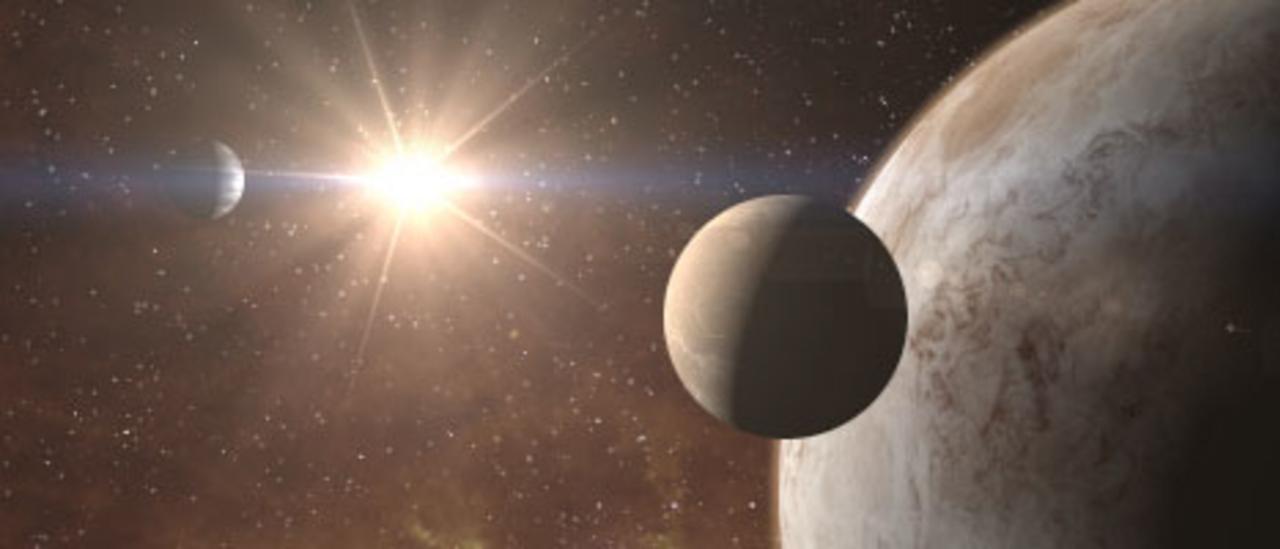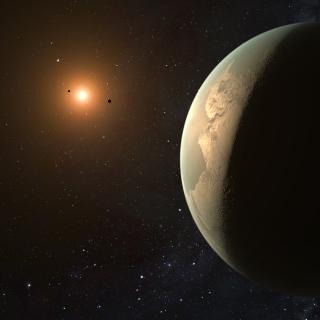General data
Every month a new planetary system is discovered. The Severo Ochoa project is supporting the ongoing work at the IAC on the following topics related to the Exoplanetary and Solar systems research line:
- Detecting and characterizing giant and rocky planets around nearby stars, with a focus on planets in the habitable zone and systems around binary stars and unusual transiting components.
- Understanding the physical properties of asteroids, comets, transitional and trans-neptunian objects and the origin and evolution of the Solar System.
A major research goal is to achieve the detection of Earth-like planets around nearby stars using new more advanced high-resolution and ultra-stable spectrographs (the IAC co-leads ESPRESSO for VLT; leads HORuS for GTC; and participates in CARMENES for the 3.5m CAHA and NIRPS for 3.5 m La Silla), and with high precision photometric surveys (team involved in the exploitation of CoRoT, Kepler, CHEOPS and PLATO space missions). Also, the characterization of exoplanet atmospheres from gas giants to exo-Earths to gain insights into their structure, surface conditions and atmospheres, culminating in evaluations on the habitability for the expected discoveries of Earth-sized planets. The IAC is exploiting GTC/OSIRIS exceptional capabilities complemented by unique access in Europe to instrumentation for long-coverage precision spectroscopy and photometry, through the SONG and upcoming LCOGT networks of telescopes. Finally, we are leading efforts in understanding the formation of exoplanet systems and the Earth: via detailed chemical composition studies of planet host stars, and the study of the physical properties of populations and families of small bodies of the Solar System. We aim to obtain information of their role in its origin and evolution and how they could influence the genesis of life.
Specific Goals 2020-2023:
- Discovery of exo-Earths via radial velocity searches using the available guaranteed time of the IAC in state of the art high-resolution spectrographs, such as ESPRESSO, CARMENES, NIRPS and HARPS3 (more than 500 observing nights already granted for the period).
- Measuring accurate planetary properties using observations of transiting planets around the closest and brightest host stars from TESS data and ground-based observatories (such as MuSCAT2 and SPECULOOS North), as well as from CHEOPS data for precise radius determination of the smallest exoplanets.
- Characterize exoplanet atmospheres with ESPRESSO, CARMENES and HARPS-N and JWST to push HeI, alkali and molecular detection from Hot Jupiters down to the super-Earth/mini-Neptune regime, and to contribute to the preparation of the ESA PLATO mission (expected launch in 2026).
- Develop an Adaptive Optics system for GTC based on a laser guide star (GTCAOLGS), which will allow the direct detection and spectroscopic characterization of young giant planets.
- Study the atmospheric parameters and composition of planets’ host stars including metal rich white dwarfs to shed light on the composition of the planets / asteroids engulfed during its evolution.
- To study the physical properties and composition of the minor bodies of Solar System, paying special attention to Near Earth Asteroids (NEAs), from the point of view of the planetary defence (Hera and DART missions) and the space exploration (OSIRIS-REx and Hayabusa2 missions), and primitive asteroids (using data from Gaia and JWST). We will also characterize new populations like the extreme trans-neptunian objects (ETNOs) or the interstellar asteroids and comets (e.g. ‘Oumuamua and Borisov).
- Astronomy and World Heritage: promoting Earth land- and skyscapes.
For previous specific goals visit: 2016-2019 IAC-SO website
Severo Ochoa Members



Main scientific outputs
Scientific outputs 2020-2023:
- Revisiting Proxima with ESPRESSO. One of the first results from the ESPRESSO instrument at the VLT telescopes was the confirmation of the planet orbiting our neighbourhood Proxima b. The extreme accuracy of the measurements also showed hints of a second signal corresponding to a planet candidate with a mass less than one third that of the Earth. Being so close to the Sun, these planets will be high priority targets for future instruments aimed to characterize exoplanets. Suárez-Mascareño et al. 2020.
- A super-Earth around the M star GJ 740. Using the HARPS and CARMENES instruments, a PhD student discovered a planet with a minimum mass of 3 Earth masses orbiting around a M1V star with a short orbital period of 2.4 days. Advanced statistical tools and combination with photometric measurements were needed to understand and correct the efects of the stellar activity. Hints of a Saturn-mass planet with a long period were also reported. Toledo-Padrón et al. 2021.
- Discovering bright material on the surface of dark asteroids. One of the most unexpected results from NASA and JAXA space missions OSIRIS-REx and Hayabusa2, respectively, is their finding of bright material, typically in the shape of boulders, on the dark surfaces of primitive asteroids Bennu and Ryugu. These two asteroids are rich in carbon compounds, hydrated minerals and organics. The bright material found on Bennu is composed of completely different anhydrous mafic silicates (basalts), while in the case of Ryugu they also found some olivine rich silicates. This finding points towards an exogenous origin of such materials, posing new constraints on the formation mechanisms and the collisional histories of these two asteroids. Tatsumi et al. 2021.
- East or Easter? Keys to the orientation of Romanesque churches along the Way of Saint James. The pilgrimage along the Way of Saint James constituted the principal mechanism for the introduction of new currents of thought into the Iberian Peninsula, such as Romanesque architecture. This work examines whether the tradition on the orientation of Christian churches eastwards was followed. The statistical analysis shows a clear tendency to orientate the apse of the church eastwards, specifically slightly to the north of due east. Although the Jacobean route acted as a way of propagating new currents and ideas, each kingdom retained its own peculiarities, accentuating some old customs, or creating new ones. Urrutia et al. 2021.







